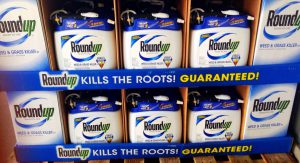Last week, US President Barack Obama signed a major overhaul of the Toxic Substances Control Act (TSCA), the federal law regulating toxic chemicals that are contained in most consumer products.
“Folks should have the confidence to know the laundry detergent we buy isn’t going to make us sick, the mattress our babies sleep on isn’t going to harm them,” Obama said at a signing ceremony for the legislation.
Unfortunately, through the revised law Congress failed to give American families, consumers, and health-affected communities what they desperately want: assurance that toxic chemicals in consumer products won’t harm their health.
That’s why state governments, environmental health watchdogs, and individuals will continue to play a vital role in protecting public health from harmful chemicals.
While the chemical industry and many product manufacturers celebrate the new TSCA, environmental health and consumer groups recognise it for what it is, a win for Big Chem and a loss for public health.
The TSCA gives the US Environmental Protection Agency (EPA) important new authority to tackle the problem of toxic chemicals. For the first time, there are also enforceable deadlines and schedules for research, as well as dedicated funding from fees paid by industry.
The Washington Toxics Coalition’s primer on the new law can be found here.
The pace of change will be slow, however. It contains requirements that will divert resources, which will take time to process. State authority is unduly infringed under the bill, but enough is preserved that states can still take the lead in public health interventions for many if not most chemicals.
The new law does make some improvements by requiring chemical testing and making it easier for the EPA to restrict the use of harmful chemicals. But the timelines and pace for federal action are very slow – up to 14 years before EPA has to restrict a chemical.
Before TSCA reform, residents could count on states to provide protection from toxic chemicals if EPA action was too slow or if EPA failed to act. The states passed strong laws and beat the chemical industry again and again. In the past three decades, 38 states passed over 250 laws that were stronger than federal standards.
But the new TSCA puts a straitjacket on states. It blocks them from passing restrictions on chemicals for up to four years once the EPA begins studying a high priority chemical. The chemical industry made this provision one of their bottom lines and it’s not surprising. Four years is a lot of time to profit from millions of pounds of toxic chemicals that end up in our products, homes, bodies, and environment.
But four years is also a lot of time for children to be exposed to harmful chemicals, for more and more people to experience diseases linked to toxic chemical exposure, and for the health of waterways and wildlife to decline. It’s too long. This is why state governments, citizens, and watchdogs must continue to act to protect public health from toxic threats.
State laws that require consumer product makers to disclose the toxic chemicals in their products will continue to be critical sources of information for policymakers and consumers. States should expand these laws to require disclosure for more consumer products and more chemicals.
States must continue enforcing existing laws that residents have come to rely on to keep them safe. State restrictions on chemicals, such as lead-based toxic flame retardants and phthalates, have given consumers confidence that products are safer, resulted in nationwide phase-outs in the marketplace, and even driven the federal government to act.
For Washington state, it will be able to implement the new flame retardant law, including banning additional toxic flame retardants, thanks to a provision in the new law negotiated by our allies at Safer Chemicals, Healthy Families.
Chemicals not covered by TSCA include those used in cosmetics, additives and food packaging. These products are used every day by consumers and states can and should take action when necessary.
There are over 80,000 chemicals on the US market today. TSCA reform still allows for state action when EPA fails or takes too long to regulate. States must step in to push the federal government to act and, when necessary; keep pressure on EPA; and pass their own laws to protect their residents and environment like they have for 30 years.
TSCA may not be all that we hoped, but TSCA reform happened because all of us demanded stronger toxics laws in our communities, states, and at the federal level. This progress can’t end and won’t.
This blog is based on an article published on the WA Toxics coalition website, and can be found here.






